YouTube Videos have a lot of impact on the viewers. There are approximately 2 billion users on YouTube alone. These individuals watch hours of videos daily, resulting in a billion views. Furthermore, more US adults between 18 and 49 are targeted by YouTube on mobile than by the website. Therefore, you should know how to run YouTube Ads successfully.
This post is for you if you want to learn how to harness the fantastic potential of video marketing. This article will first explain YouTube advertising and the many categories for running successful YouTube advertisements.
Next, we will walk you through setting up and configuring your first YouTube ad campaign. Finally, we’ll talk about several YouTube tips that might improve the effectiveness of your YouTube marketing. So, Let’s begin immediately.
What Do You Mean by YouTube Ads?
YouTube ads are promotional videos run by individuals and brands on the YouTube platform. They appear in front of viewers when they want to see a video. For example, when you browse through YouTube and click on a video to watch, the YouTube ad appears before the actual video, in the middle, or at the end of the video.
YouTube ads come in various formats, including Skippable, non-skippable, bumper, and overlay. Each ad format serves a different purpose. Some are used to create brand awareness, and some are used for promotion.
YouTube is owned by Google. Advertisers pay to run their ads on the platform. Various strategies must be implemented to meet the right audience, which is why it is important to know how to run YouTube ads.
The strategies help ads reach the right audience. Advertisers have to run ads based on users’ interests, search history, demographics, etc. The majority of businesses run their ads on YouTube because they provide ROI.
Why Running Ads on YouTube is Essential?
As discussed, the primary reason for running ads on YouTube is its massive audience base. The platform has a billion users, and that’s a recurring number.
More than 500 hours of videos are uploaded every minute. The users also consume it, providing advertisers with a large audience to run their ads. Even if the ads are targeted at a narrow audience, they can still be effective. Still, the user count will be in thousands.
The YouTube ads are also of a different type, such as non-skippable ads or bumper ads, giving an edge to tempt the audience with the proper ad format.
What are the Benefits of YouTube Ads?
Running YouTube ads is beneficial. They provide ROI and establish brand identity. Let’s look at some more benefits of YouTube ads.
Broad Audience: YouTube is the second-largest search engine and has 2 billion returning visitors. It is a global platform that caters to every type of consumer.
Engagement & Awareness: YouTube ads showcase brands in video formats. Video ads are visually tempting, and the audience tends to remember them longer, creating a lasting impression.
Reach Target Audience: YouTube ads let advertisers run ads to their target audience by providing insights into demographics, locations, age, and user behavior.
Multiple Ad Types: Advertisers can run multiple types of YouTube ads, including skippable, non-skippable, shorts, bumper, etc. Give them a chance to implement numerous strategies.
Campaign Tracking: Advertisers can track their campaign performance to see whether their strategies are working and adjust them accordingly.
Now that we understand the benefits of YouTube ads, we can examine different ad types and learn how to run YouTube ads using each ad format.
Where Do YouTube Ads Run?
So far, we have understood how to run ads on YouTube. Let’s see where these running YouTube ads appear.
The ad mainly appears at
Pre-Video: The ads appear before you at the start of YouTube video content.
Mid-Video: While watching video content, you can see the ad appear mostly in the middle of the video.
Post-Video: Some ads appear after the video is completely watched.
Additionally, some other YouTube ads, such as Masthead, appear on top of the YouTube homepage. If you run such ads, you have to contact a YouTube sales representative. The cost of the ad is high because it is seen by the whole targeted region.
6 Types of YouTube Ads
Let’s examine how to run YouTube ads using 6 different ad formats. Each ad serves a specific purpose, and you can implement it in your strategies.
Skippable In-Stream Ads
These ads play at the start, middle, and end of the YouTube video. After 5 seconds, viewers can skip these ads. The ads are usually 2 to 3 minutes long, and viewers can keep watching the ad if they are interested.
Advertisers pay when viewers watch the ads for the latest 30 seconds or click the ad to be directed to a landing page. The Ad type uses Cost-Per-View(CPV) bidding strategy. Which is cost-effective, as you have to pay when viewers engage with the ad.
Non-Skippable In-Stream Ads
The ads are 15 seconds or less and can’t be skipped; viewers must watch the whole ad before returning to their content. The advertisers are charged per 1000 impressions, that is, Cost-Per-Impression(CPM).
Just like skippable ads, these ads can also be placed at the start, middle, and end. This ad type is mainly used for retargeting or bold announcements. Since it doesn’t focus on CTR, the ad should be simple yet memorable.
Bumper Ads
These ads are 6-second non-skipable ads that appear at the start, middle, or end of the video. The advertisers have to pay on Cost-Per-1000 Impressions (CPM). These ads can appear on YouTube as well as Google associate pages.
The bumper ads are short and quick. Advertisers use this ad type to quickly deliver the brand’s punchline, as well as for reminders and retargeting.
YouTube Shorts Ads
The YouTube Shorts format has gained a large number of users in recent years. Ad types are designed for vertical videos (9:16) and quick mobile viewing. The ideal length for the ad type is 15-60 seconds.
The ad appears in Short Feed, where users watch shorts. These ads appear in between. The bidding strategy involves CPV, CPM, and Cost-Per-Action(CPA). The Ads are best for targeting mobile users. Using short ads can be an effective strategy to divert users to a landing page.
In-Feed Video Ads
These ads appear in YouTube search results, the watch page, or the homepage. For example, when you browse the homepage, you get to see ads in between, or when you search for something, you also see relevant ads in the results among organic videos.
These ads are also called discovery ads because they appear alongside organic videos. The ad type can attract viewers as it blends perfectly with other videos. Advertisers can create an attractive thumbnail and title to lure the audience.
Masthead Ads
These premium category ads appear at the top of the homepage. For example, when someone visits YouTube or reloads the page, the banner-style ads appear at the top. The ads are the first thing users will see when coming to YouTube, making it the most effective brand promotion.
Advertisers can place this ad for a day or per thousand impressions. They can only be placed by contacting a Google sales representative. These ad types can be used to reveal a product or launch a major event.
How Can You Run Google Ads On YouTube?
If you haven’t previously, you must produce your video with the relevant ad content.
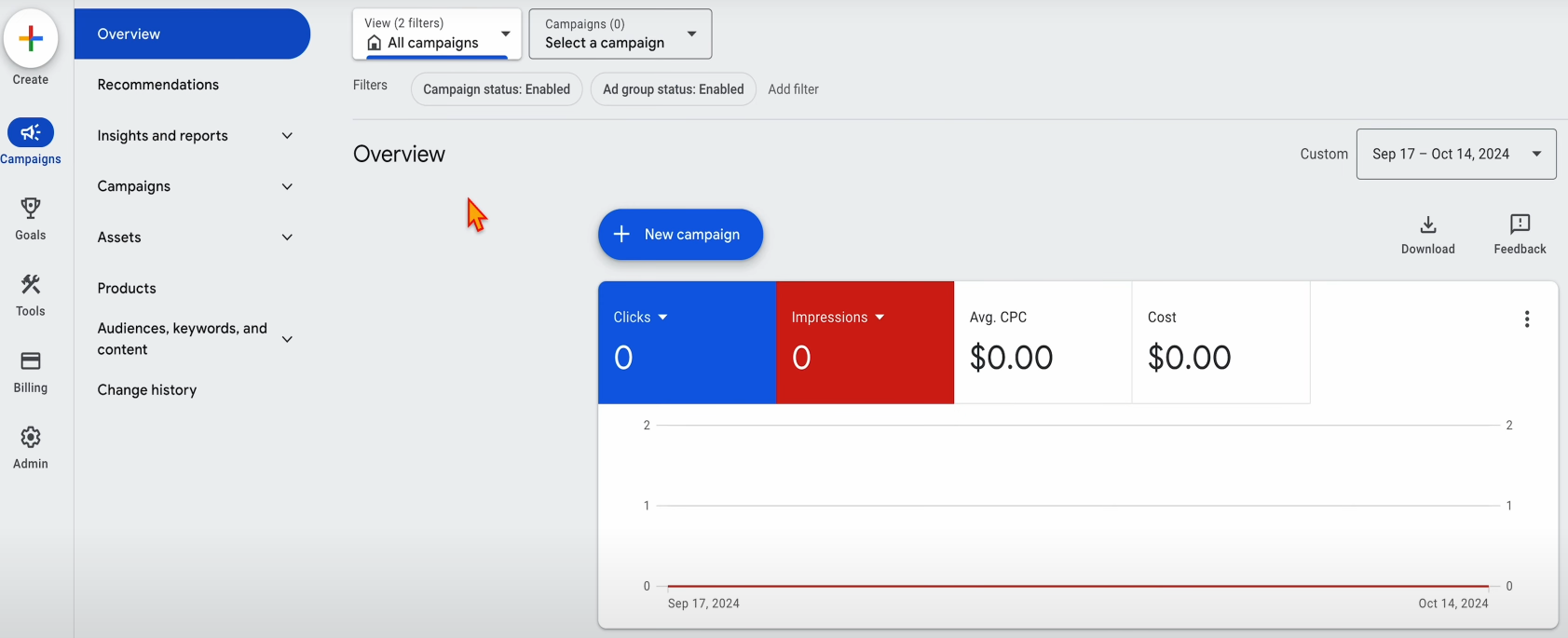
Look at the YouTube advertisements leaderboard for ideas on how to write an effective YouTube video ad. In addition, a list of the top YouTube commercials worldwide is published monthly. Below are tips on how to run YouTube ads successfully.
1. Upload Your Video To Run Ads On YouTube
Before configuring your YouTube ads campaign, uploading your marketing video to your YouTube account is best.
You can do this by logging into your YouTube account and clicking the small camcorder icon on the top right of YouTube. Then, simply click ‘Upload Video.’ You’ll be taken to the upload window, where you can select the file you want to upload. Be sure to complete all necessary information, like the title, description, and tags. Now, let’s begin with the best tips you should practice while creating an ad for your YouTube video.
2. Create A New Campaign In Google Ads
You may start setting up your YouTube ads campaign as soon as your video has been posted.
- Go to your Google Ads account first.
(If you don’t already have a Google Ads account, see this tutorial on how to get one.) - Go to the left-hand sidebar and choose “All campaigns” after logging into your account. Then, click the blue “+” icon to start a new campaign.
3. Select Objective Type
After clicking “Video,” you must choose a single objective that reflects the primary purpose of your campaign for your company.
For instance, you might choose the “Website traffic” target if you want to use YouTube ads to boost the number of people that visit your website. You will then see suggested features and options as you set up your campaign, which can aid in driving traffic to your website. Hover your mouse over a goal choice to see more information about it. Further details on the objectives and subtypes of video campaigns are provided in the chart below for context.
A goal can be added or removed at any moment. You may also construct your campaign without reading a goal’s recommendations if you’d like.
4. Configure Your Campaign
Let’s set up your campaign now. Select a name that accurately defines your campaign, as this is just for internal use. Using Google Ads and running numerous campaigns will make it simple to identify the drive.
Set Your Budget
Set the average daily amount you wish to spend first. Start off modestly at first. So you can be sure you get the best potential return on investment and test and improve your advertising plan. Conventional or fast delivery options are also available.
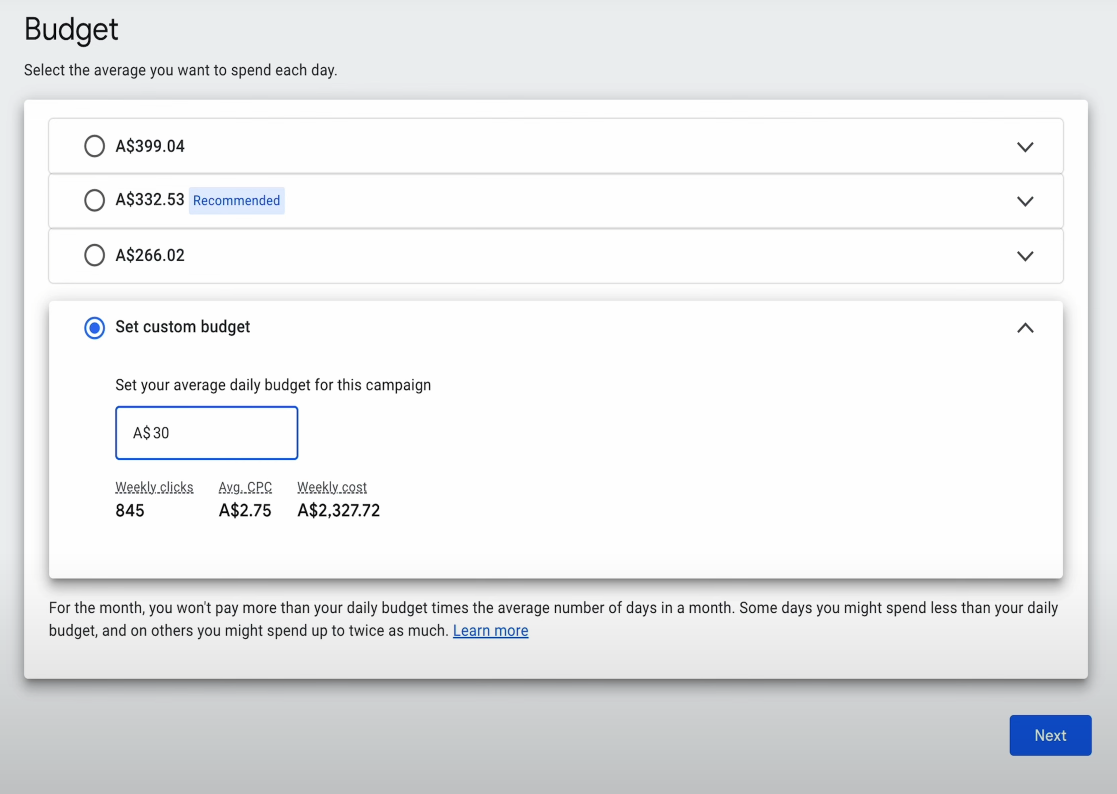
Standard will spread your spending over the day, whereas accelerated would show your advertising constantly and cause your budget to deplete more quickly.
Start by selecting rapid delivery. In this manner, you may quickly gather data for campaign optimization purposes. Select Your Start and End Dates next. Then, enter your start date and, if desired, select an end date.
Choosing Your Networks- To Run YouTube Ads
You may choose where you want your YouTube ads to display in this area. For example, there are three choices accessible as we’re making a video advertisement:
- YouTube videos: First, results from YouTube searches may include advertisements. (This option will limit you to seeing TrueView discovery advertising.) Ads will be displayed on the site, channel pages, and videos.
- Partners for video on the display network: This implies that your advertisements will also run on Google’s other advertising channels.
- Networks for YouTube Ads: We will leave the selection alone in this case.
Choose A Location And A Language
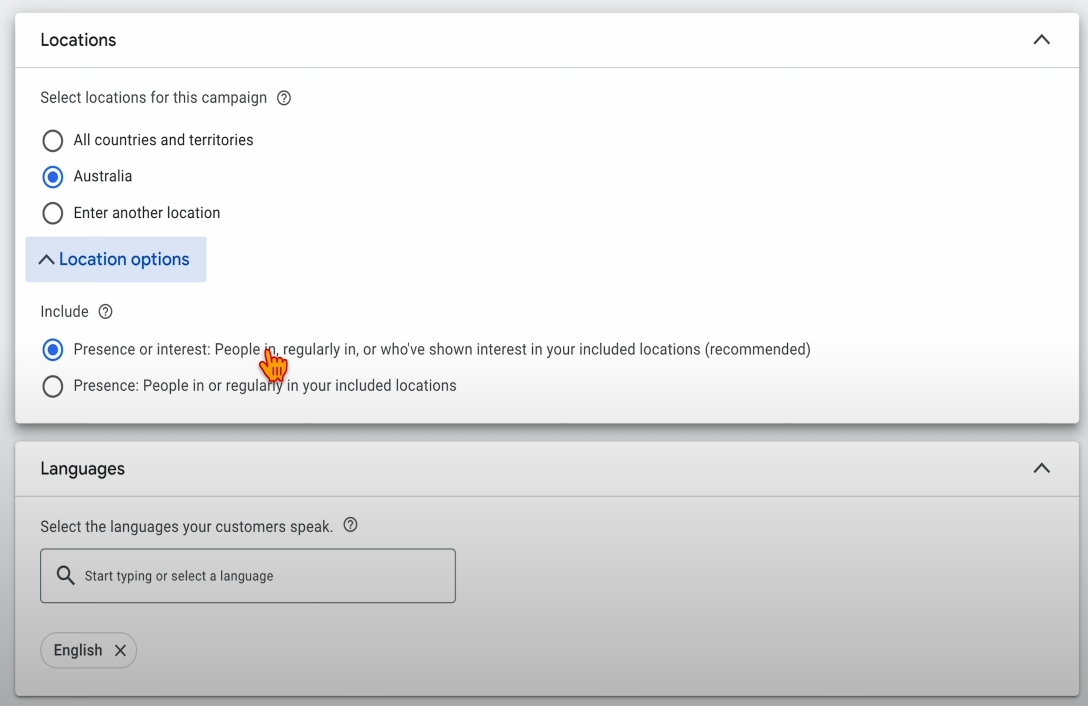
Make sure to choose the nation and language in which you want your advertisement to appear.
5. Choose Your Bidding Technique
You must now decide how you will finance your campaign. There are four choices in Google Ads.
- Maximum CPV: Fees are determined by how many views and interactions a video receives.
- Maximum CPM (cost-per-mille): You will be charged for every thousand impressions of your advertisement.
- You will only be paid per thousand impressions after your advertisement has really been viewed (viewable CPM, also known as vCPM). So you won’t be charged, for instance, if a user lands on the page and leaves immediately.
- Target CPA (cost-per-acquisition): Fees depend on viewer activities, such as clicking on your advertisement.
Select Inventory Type
Your advertising can only be displayed in this section on the material consistent with your brand. So, for instance, if you own a dropshipping company that sells toys for kids, you won’t want your adverts to appear next to adult or violent material.
To ensure your advertising isn’t displayed on offensive material, it’s essential to carefully go through each choice.
Exclude Material
To go further, you may choose not to view specific sensitive content categories like “Tragedy and conflict” and “Sensitive social topics” in this area. But, again, don’t miss this step – doing so might have disastrous effects on your brand!
6. Select Your Audience
Give your ad group a name that describes it before you start choosing your audience. You’ll be able to utilize the same audience selection in subsequent ad campaigns if you do it that way. The process of focusing on your target audience begins here.
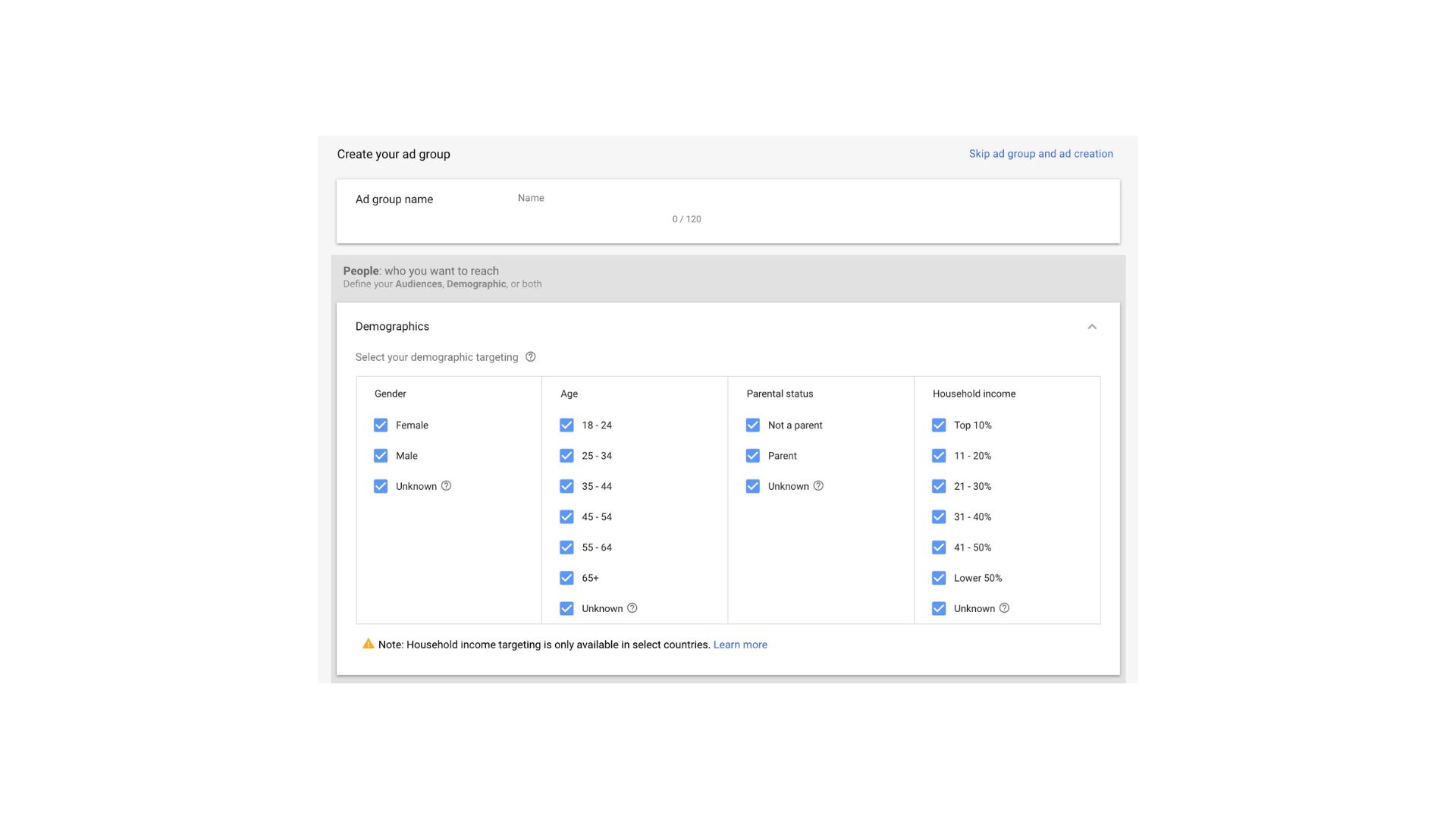
Ads allow you to specify the target audience by providing information about their gender, age, parenting status, etc.
7. Choose The Location To Run YouTube Ads
- Enter Your Desired Keywords
One word or phrase per line should be entered or pasted into the field as your target keywords.
- Ads on YouTube Keywords
You may also utilize the “Get keyword suggestions” tool to identify comparable keywords to target.
- Select Topics
To display your advertisements on articles on particular issues, choose relevant topics to run YouTube ads.
- Select Your Locations To Run YouTube ads
Okay, so now you can choose exactly where you want your advertising to appear.
If you omit this field, your advertisement will run on any YouTube or Display Network placements that correspond to your other targeting preferences.
8. Choose A Marketing Video
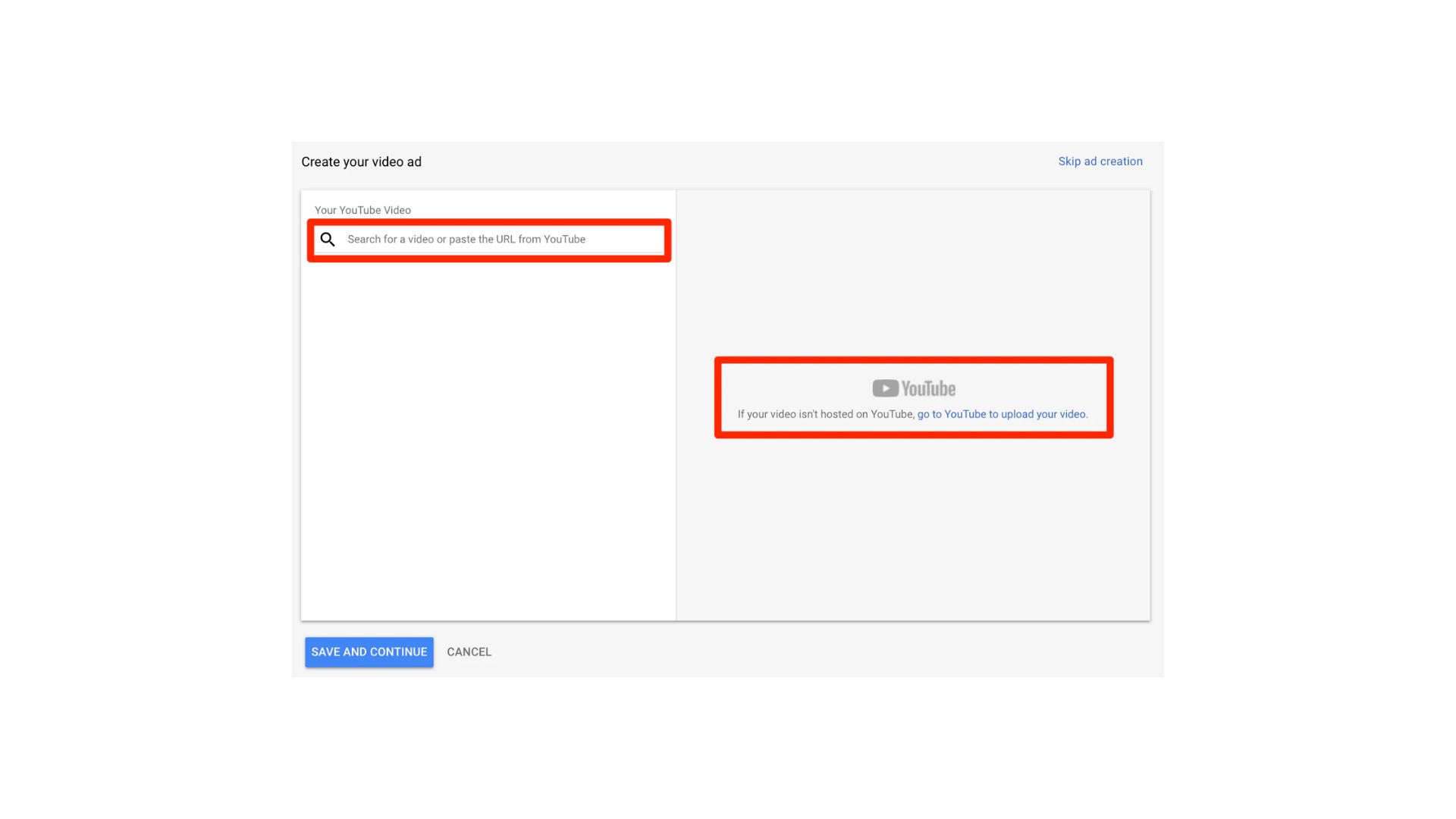
Next, look for your marketing video using the search bar. If you haven’t already, you may also click the link to post your video to YouTube. When your video displays, click on it to choose it.
9. Make Your YouTube Ads Configurable
Finally, you need to pick your video format. Based on the choices you’ve already made for the campaign, ads will display the accessible possibilities. Then, remember to include your title, CTA, and URLs.
Here, we’re going with an in-stream ad format. Remember, in-stream video adverts have a matching display banner. In this situation, you can upload a picture or let Ads create one using videos from your YouTube channel. Click “Save and continue” and “Continue to campaign” to complete the process. You’ve just launched your first YouTube advertising campaign. Congrats!
Now that you know how to run YouTube ads, try promoting your videos with a small budget. Once you feel confident, gradually increase your campaign spending.
How much do YouTube ads Cost?
There is no fixed or standard approach to YouTube ad costing. The costing varies depending on your campaign objectives, such as budget, set ROI, or projected cost.
The costing is based on cost per impression (CPM), where you pay for every 1000 times your ads are seen, regardless of whether they get clicked or not.
In 2024, the ads cost around $0.010 to $0.030, making the daily spend for 1000 impressions $10 to $30. Although feasible, it gets exhausted quickly, which makes advertisers spend more.
Improve Campaigns with AI
The AI technologies are helping advertisers in their campaigns. They can create an effective campaign strategy using Google Ads AI solutions, such as Google Performance Max campaigns or PMax.
The AI technology understands the performance of ads. Finds what is different in successful ad campaigns from non-performing ones. This information is used to automatically optimize campaigns for reaching more customers and increasing conversions.
Metrics to Measure YouTube Campaign Success
Measuring specific metrics can give you a clear picture of your campaigns. The AI tech, such as PMax, evaluates the results. Which can give help find the valuable insights. Here are some metrics that we consider to be of value when advertising.
Views: The number of YouTube users who watched your ad content. This doesn’t count whether users watched the whole ad or not.
Impressions: The metric tells how many times the ad appeared in front of people. The higher the number of impressions, the greater the reach.
Clicks: This metric indicates the number of people who clicked on the ad and visited the landing page.
Cost per view: A metric to calculate engagement. You pay when someone watches your ad for a set duration, such as 15 to 30 seconds on YouTube.
Conclusion
YouTube advertisements might at first seem intimidating. But advertisers can access a rich set of tools through YouTube’s many ad types to effectively reach their target audience. Your content strategy must include video content. This is even more true now that YouTube allows marketers to target viewers depending on their search history. Because video content is more recent and less well-known than blog entries, YouTube ads are more targeted than before, and therefore as a viewer, you might get many ads on the YT platform. Also, offer less competitive prices than Google Search.
Now that you know how to run YouTube ads using Google Ads, go ahead and create a successful ad campaign on your YouTube channel!
Frequently Asked Questions
Q1. Can I pay to promote my YouTube video?
Yes, you can pay to promote your YouTube video using Google Ads. Allowing you to reach a wider audience and increase engagement.
Q2. Why are people clicking on my ad but not buying?
The problem can be a poor landing page, a weak CTA, a complicated UI or checkout, a different price from the promised or misleading ads, etc. It can stop people from buying.
Q3. Where should people go after clicking your ad?
After clicking the ad, people should be directed to the relevant landing page, where they can see what they were promised. The ad should quickly engage users and provide a proper user experience.
Q4. Can YouTube ads increase views?
Yes. YouTube ads enable you to reach the right audience who have higher chances to interact with your videos, thus raising the chances to increase views on your videos. However, you can also buy YouTube views to garner more engagement on your YT videos.
Summary
- YouTube ads come in various formats, including skippable, non-skippable, bumper, overlay, YouTube Shorts, and masthead ads, each serving different advertising purposes.
- Running YouTube ads can provide significant benefits, such as broad audience reach, high engagement, targeted advertising based on user demographics, and effective campaign tracking.
- Advertisers can effectively configure YouTube ad campaigns through Google Ads by selecting objectives, setting budgets, targeting specific audiences, and choosing appropriate bidding strategies.
- YouTube ads are designed to enhance brand awareness and can lead to a positive return on investment (ROI) for businesses that utilize them strategically.


